1935 - 1936 NEWPORT RHODE ISLAND
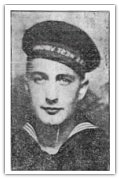 In
1935,
William enlisted in the United States Navy. Rated as an "Apprentice
Seaman" he departed Springfield,
Massachusetts on September 11th for
the NTS in Newport, Rhode Island. He
was 18 years old. In
1935,
William enlisted in the United States Navy. Rated as an "Apprentice
Seaman" he departed Springfield,
Massachusetts on September 11th for
the NTS in Newport, Rhode Island. He
was 18 years old.
The following month on October 14th
William was sent to the USNH in Newport for two weeks. He left the
Newport USNH on November 1, 1935 and
returned to the NTS in Newport, Rhode Island. William remained at the
NTS in Newport, RI until he graduated to an "Seaman Second Class".
On
January 24, 1936,
William had
completed
boot camp
and was given a 34 day leave of absence with orders to
return February 27, 1936 for duty aboard the USS WEST
VIRGINIA.
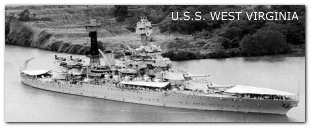 1936
-1937 USS WEST VIRGINIA 1936
-1937 USS WEST VIRGINIA
William returned from leave and
was stationed aboard the USS WEST VIRGINIA
in San Pedro California on February 27, 1936.
The USS West Virginia is a 32,600-ton Colorado
class battleship built at Newport News, Virginia and was
commissioned in December 1923. She is the last battleship
completed for the United States Navy for nearly two decades, making her
the newest of her class when William was aboard. During 1930s, she served in the U.S.
Fleet, taking part in "Fleet Problems" and other exercises as
part of the continuing effort to develop tactics and maintain the Navy's
combat readiness.
While on shore leave
from the USS WEST VIRGINIA,
William
was accosted by a
man seeking information about the
Navy. William became suspicious of the "sailor" and had
the man arrested. After interrogating the individual it was
learned that he was a civilian, wearing the Navy's Blue Jacket, posing
as a sailor to gain information. William was praised by his commanding officer J.B.
Oldendorf - Commander of the USS WEST VIRIGINIA.
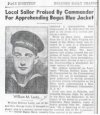 The citation conferred on him reads:
The citation conferred on him reads:
"William Mathew
Losty, Seaman
2c, Commended by the Commanding officer for use of intelligence and good
judgment in having arrested a civilian seeking information on the Navy
while impersonating a Blue Jacket. " Report of this action
was printed in the California Navy Bulletin. Reference
  In 1936
the crew of the USS West
Virginia celebrated the holiday
seasons
together. View the holiday menus the crew of the USS West
Virginia were served during that year. Thanksgiving
|Christmas
Menu Cover | Christmas
Menu| Christmas
Message
In 1936
the crew of the USS West
Virginia celebrated the holiday
seasons
together. View the holiday menus the crew of the USS West
Virginia were served during that year. Thanksgiving
|Christmas
Menu Cover | Christmas
Menu| Christmas
Message
 FRANKLIN D
ROOSEVELT, Commander in
Chief sent a telegram to the USS West Virginia & her crew
during the 1936 holiday season.
click the image to enlarge FRANKLIN D
ROOSEVELT, Commander in
Chief sent a telegram to the USS West Virginia & her crew
during the 1936 holiday season.
click the image to enlarge
On September
17, 1937, William Mathew Losty,
now a "Landing Craft Seaman", left the USS
WEST VIRGINIA and where he went for 6 months is
unknown. There
is no record of service for William entered in his "summary of
service" log for the dates between September 18, 1937 and March 10,
1938. However, I am certain the Navy knew where they could find
him. My uneducated guess would be on secret assignment or there is
a clerical error in his record. The secret assignment theory is
not without merit as you will later learn.
On March
11, 1938, William reappears in Puget
Sound, Washington at the USNH. He was there three weeks,then
sent to re-join
the USS WEST VIRGINIA April 1, 1938.
William remained aboard the USS WEST VIRGINIA
for 44 days. On May 14, 1938, William departed from the WEST
VIRGINIA on a two week furlough with orders to report for duty aboard the
USS NASHVILLE on June
9, 1938.

1938 - 1940
USS NASHVILLE
The USS Nashville
a 9,475-ton Brooklyn class light cruiser built at
Camden, New Jersey, was
commissioned in 1938 with Capt. William W. Wilson in command. The ship spent
most of her American career in the Pacific War Zone.
The USS Nashville departed
Philadelphia 19 July 1938 for shakedown in the
Caribbean. In early August, she sailed for Northern Europe on a
good will visit, arriving at
Cherbourg, France, 24 August 1938. Getting underway on the 21st of
September from Portland England, with 25 million dollars in British gold
bullion aboard The USS Nashville arrived at Brooklyn Navy Yard on
September 30th to offload the gold and then returned to
Philadelphia October 5th 1938. Williams
Article
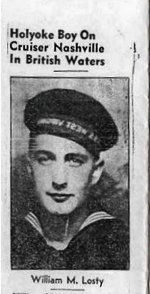 In
May of 1939,
William was home on a three day furlough. He rejoined the USS
Nashville on Sunday night in Philadelphia and then left May 10th on a Good-Will Trip to Brazil.
The USS Nashville was carrying American In
May of 1939,
William was home on a three day furlough. He rejoined the USS
Nashville on Sunday night in Philadelphia and then left May 10th on a Good-Will Trip to Brazil.
The USS Nashville was carrying American  representatives to the Pan American Defense
Conference in Rio de Janeiro, Brazil. The
Newly appointed Army General of the
United States was inspecting the Brazilian Army and the
Brazilian Army General was inspecting the USS Nashville. The
Nashville returned the General to Annapolis on
June 20th 1939.
representatives to the Pan American Defense
Conference in Rio de Janeiro, Brazil. The
Newly appointed Army General of the
United States was inspecting the Brazilian Army and the
Brazilian Army General was inspecting the USS Nashville. The
Nashville returned the General to Annapolis on
June 20th 1939.
Three days later
the USS Nashville sailed
from Norfolk for the Pacific via the Panama Canal, arriving in San
Pedro, California on July 16th 1939 for two years of operations.
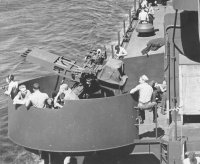 While aboard the USS Nashville,
William qualified as a "Gun Director Pointer Second
Class" on March 26, 1940. He was entrusted with this
duty while stationed on the USS NASHVILLE
by his commanding officer on April 1, 1940. While aboard the USS Nashville,
William qualified as a "Gun Director Pointer Second
Class" on March 26, 1940. He was entrusted with this
duty while stationed on the USS NASHVILLE
by his commanding officer on April 1, 1940.
GUN DIRECTOR
Responsibilities are to track surface and subtonic air targets and to provide
a gun fire solution to the guns.
William was also promoted to a
Coxswain during his stay aboard the USS Nashville and included the
following responsibilities.
COXSWAIN
Responsibilities:
-
Identify not less than 6 types of boats, and name the various parts of a boat by actual demonstration
-
Take charge of a boat’s crew and demonstrate: Bring the boat alongside a dock or another vessel correctly;
Anchor correctly; Maintain boat discipline.
-
Know the elementary rules of the road at sea for both steamships and sailing ships, together with any local rules for small boats
-
Use properly the following:
Clove Hitch; Rolling Hitch; Anchor or Fisherman’s Bend.
-
Know the correct gear that should be properly carried in a small boat
-
Form part of a boats crew for an expedition of not less than 24 hours’ duration, to include a night spent in camp
The USS NASHVILLE returned to the
Atlantic in June 1940, to serve on the Neutrality Patrol and in
"short of war" operations. She remained in the north
Atlantic area through the first months of World War II.
          The
USS NASHVILLE earned 10 battle
stars during her American career, more than
any other Brooklyn class cruiser.
The
USS NASHVILLE earned 10 battle
stars during her American career, more than
any other Brooklyn class cruiser.
William departed
from the USS Nashville on July 21, 1940 and reported for duty at the
UNSH in Mare Island, California the same day. He remained in
Mare Island for the
next 64 days.

There is no entry of
William's whereabouts between September 24, 1940 and November 6, 1940 in
his "service of summary" log. Time frame 43 days
William reappears, as
noted in his record, on November 7th, 1940 aboard the
USS
NASHVILLE. He remained there for 36 days and departed the
Nashville on December 13, 1940. That same day William was in San
Francisco reporting for duty at the USN Recruiting Station. He
remained there for 51 days.
1941 - WM P BIDDLE
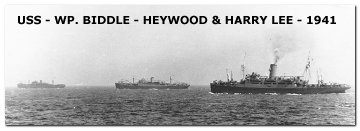
The Ship, City of San
Francisco was acquired by the Navy in 1940
and converted for Naval service as a Transport Ship at Moore Dry Dock Co.,
Oakland, CA. The USS William P. BIDDLE was commissioned on February 3rd, 1941.
William received orders while at the
Recruiting Station in San Francisco to report for
duty on February 3rd, 1941 aboard the USS WM P
BIDDLE, the same day this ship was
commissioned. William
stayed aboard the BIDDLE for 6 months departing from it on August 12,
1941 for the Norfolk Navy Hospital PTS VA
and he remained there for 51 days.

There is no entry of
William's whereabouts between October 3rd, 1941 and January
1st, 1942 in
his "service of summary" log. Time frame 90 days
1942 - R/S NEW YORK,
NY
On January 2, 1942
William reappears at the USN Recruiting Station
in New York City. He
remained there until February 27, 1942 when he received orders to
report for duty aboard the USS FOMALHAUT.
While in New York
William searched the local phone directory for the name Losty hoping to
contact family members while there. Kathleen Carrigan of New york,
daughter of Lawerence Losty, recalls her Aunt Margaret Losty inviting
William to her apartment during the war while he was in New York.
While
reading the story of William Mathew Losty who died in World War II.
I recalled a story my aunt Margaret told me years ago. Margaret
Losty is the granddaughter of Michael Losty who immigrated to New
York from Ireland.
Margaret was a nurse living in NYC during the war. In 1942, a
young man, who was passing through NYC on his way to war, looked in the
NYC phone book for any Lostys he could find listed, as that was his name
as well. The young man phoned Margaret and she invited him to her
apartment for dinner. William must have told his
family about Margaret's kindness because she was contacted by
Williams' family after his death in 1943 and was thanked for treating
him like family while he was there. Margaret was very emotional
when she told me this story. I remember seeing the tears in her
eyes. It was also told to me by my uncle, that, my grandfather
John Losty spoke of cousins who lived in Massachusetts but he said they
had no real communications with them.
Kathleen
Carrigan - New York
1942 -
1943 USS FOMALHAUT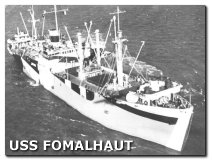
Through one year and a half, The
USS Fomalhaut carried out continuous cargo operations in the
southwest Pacific, going through some of
the hottest fighting of the war
supporting the many landings and shore campaigns in the battle for
Guadalcanal and the other islands of the southern Solomons.
William
was aboard the USS FOMALHAUT
from February 28, 1942 to
July 10, 1943.
History of
the USS FOMALHAUT - while William was aboard.
The USS
FOMALHAUT was acquired by the Navy May 16, 1941 and commissioned
March 2, 1942 with Commander J. D. Alvis in command. On
February 28, 1942
William boarded the USS FOMALHAUT rated as a Boatswains
Mate Second Class.
The USS Fomalhaut arrived at Samoa
May 8, 1942 with passengers and cargo from the east coast. On
the 22nd of June she sailed for Wellington,
New Zealand, to load cargo from June 30, 1942 -July 22,
1942. Landing
rehearsals at the island of Koro in the Fijis were conducted from
July 28 - July 30, 1942.
On July
31,1942,
as night was falling, the ship departed from Koro. The carrier task
force proceeded north and west while the transports and their screen
plodded steadily toward the Solomons. Almost 19,000 Marines
were embarked in the 19 transports and four destroyer-transports. There
was no sign of enemy aircraft or submarines, and no indication that
the approach was observed. In fact, enemy patrol
planes were ground at
Rabaul on the 5th and 6th of August because of bad weather.
The convoy headed
generally west from Fiji and well to the south of the Solomons
chain. Task Force
62 (Williams Group), commanded by Admiral Turner, was divided into
two Transport Groups. Transport Group X-Ray commanded by Captain
Lawrence F. Reifsnider, with the Guadalcanal forces embarked,
consisted of four subgroups, as follows:
- Transdiv A: Fuller, American
Legion, Bellatrix.
- Transdiv B: McCawley,
Barnett, Elliot, Libra.
- Transdiv C: Hunter Liggett,
Alchiba, Fomalhaut,
Betelgeuse.
- Transdiv D: Crescent City,
President Hayes, President Adams, Alhena.
The course
gradually shifted to the northward, and on the night of August 6-7
the entire group of ships were due west of the western extremity of
Guadalcanal for the initial landings of
Marines on Guadalcanal and Tulagi on August 7, 1942.
The final approach to the
transport area was made without incident, and there was no sound
until, at 0614, when the supporting ships opened fire on the
island. There are some indications that the Guadalcanal
operation on D-Day morning was something of a minor Pearl Harbor in
reverse for the Japanese.
During this first American land
offensive of the war, The USS Fomalhaut lay anchored in such a position
as to observe the Battle of Savo Island August 9, 1942, and that day sailed for Noumea
to load additional men and supplies for Guadalcanal.
Returning to Guadalcanal August
23, 1942, The USS Fomalhaut was ordered
to take Blue (DD-387), torpedoed the previous day, in tow.
But before she could complete unloading and get underway with her
tow, an enemy submarine launched a torpedo her
way, and Japanese surface forces were reported moving in. As
two other destroyers sank Blue to prevent her from possibly
falling into enemy hands, The USS Fomalhaut was ordered underway
with all but a quarter of her cargo unloaded.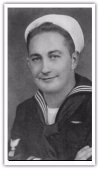
On February 1,
1943 the USS FOMALHAUT was reclassified as an Attack Cargo
Ship. You can continue reading about the USS FOMALHAUT here.
William departed the USS FOMALHAUT July 10, 1943
and was stationed at the Advanced
Naval Base Force at Koli Pt.
JULY 10, 1943 -
JULY 18, 1943
William was
assigned to the LST 342 (Landing Ship Tank) the same day he left the
USS FOMALHAUT on July 10, 1943
U.S.
Navy Amphibious Ships -Tank Landing Ship
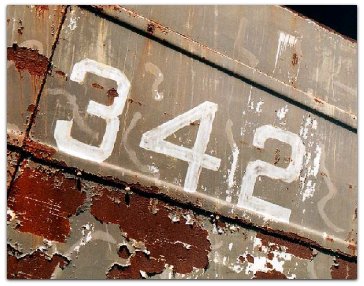 Description:
Tank landing ships (LST) are used to transport and land tanks,
amphibious vehicles and other rolling stock in amphibious assault. Description:
Tank landing ships (LST) are used to transport and land tanks,
amphibious vehicles and other rolling stock in amphibious assault.
Features: Ships of this class are the
first to depart from the bow-door design that characterized the
workhorses of World War II. The hull form necessary to attain the
20-knot speeds of contemporary amphibious squadrons would not
permit bow doors. Accordingly, these ships offload cargo and
vehicles by means of a 112-foot ramp over their bow. A stern gate
allows off-loading of amphibious vehicles directly into the water.
The two ships of this class, now assigned to the Naval Reserve
Forces, are the only of this 20-ship class of LSTs remaining in
the fleet.
The
USS LST-342 (Boat Pool 8) was assigned to the Asiatic- Pacific theater and
participated in the New Georgia-Rendova- Vangunu occupation in July
1943. Eight days after William was assigned to this ship it was hit by a
torpedo launched by the RO-106 Japanese submarine, west of
Guadalcanal, July 18, 1943 - Solomon Islands. Location of the
LST-342 when
struck 09°03'S, 158°11'E. The LST-342
seen in the photo below is now resting on the banks of Tokyo
Bay.
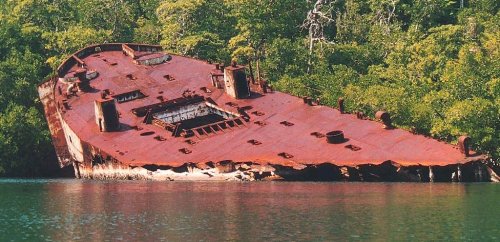
LST 342 PHOTOS -
ON THE BANK OF TOKYO BAY
      
Also aboard the LST-342
was Edwin J. Seymour who survived the attack and lived to tell the
story of the LST-342 the night it was hit by the Japanese R/O
106.
It was his 21st birthday( July 17
1943 ). He was sleeping in a middle deck up front
when a very loud noise and a violent shake woke him up. He
immediately headed up to the top. He could not see anything because it
was very dark. He could hear people jumping over into the
water. He decide to wait it out. When it got light out he
said the back half of the LST was gone and there were life
jackets floating in the water but could not see anyone swimming.
There were only about fourteen men still on the boat. He thinks all
were army except for one sailor. He said that the sailor told
them he had been watching the water level and that the boat had not
gone down any more in the past two hours and he thought they
should stay on the boat. Later that day cruisers came to
rescue them but would not come in close until the sailor found
something shiny to signal the boat in code, then they were
picked up.
Edwin J. Seymour
- LST 342 Survivor
Photos of
the LST-342 were provided by Rita
and Gary Seymour. You can view
more photos of the wrecked LST-342 here.
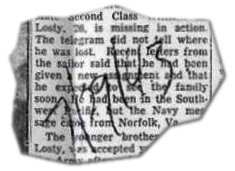 The USS LST-342 was
struck
from the Navy list on 28 July 1943. The following day William's
name appeared in his hometown paper reporting him missing in action.
The article mentions recent letters received from William which told
of a new assignment he'd been given and that he expected to see his
family soon. Read
the ariticle The USS LST-342 was
struck
from the Navy list on 28 July 1943. The following day William's
name appeared in his hometown paper reporting him missing in action.
The article mentions recent letters received from William which told
of a new assignment he'd been given and that he expected to see his
family soon. Read
the ariticle
 The
USS LST-342
earned one battle star and the Navy Unit Commendation for World War II
service. The
USS LST-342
earned one battle star and the Navy Unit Commendation for World War II
service.
The
following year on August 16, 1944 William's parents, Mr. & Mrs.
George J. Losty of 298 Chestnut Street in Holyoke, Massachusetts were informed
by the Secretary of the Navy
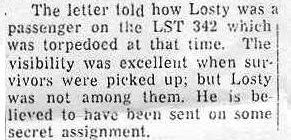 their
son William Mathew Losty, had been officially declared dead
as a result of the attack on the LST 342 believed to have been sent on
a secret assignment in the Solomon Sea. Read
the article their
son William Mathew Losty, had been officially declared dead
as a result of the attack on the LST 342 believed to have been sent on
a secret assignment in the Solomon Sea. Read
the article

On
October 18, the same year, William was awarded
the Purple Heart and it was accepted by his mother Mrs. Delina
Losty.
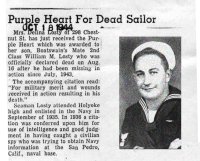
William's
Purple Heart has been passed down through the family and is now in the possession of Mrs.
Susanne Kelley, the daughter of Eleanor Losty Noland (William's Sister)
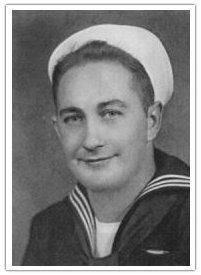
To
our Dearest William,
We
shall never forget your smiling face, your loving eyes and your
unselfish acts of kindness when you were home, We shall never
forget the honor you bestowed upon our family and yourself, for your
courage, your bravery and your patriotism you displayed throughout
your Military career. To our Dearest William we shall never
forget that you died for us and our children. For you we
dedicate this site and for all those men who died with you, and all
the women who loved you.
We
Will Always Remember You
William
Mathew Losty
July
16, 1917 - July 18, 1943.
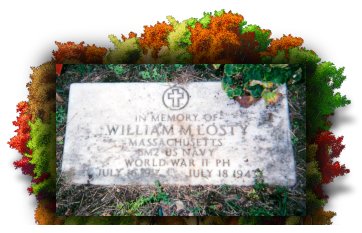
William
Mathew Losty Memorials
WWII
Memorial in Hampden Park - Holyoke, Massachusetts
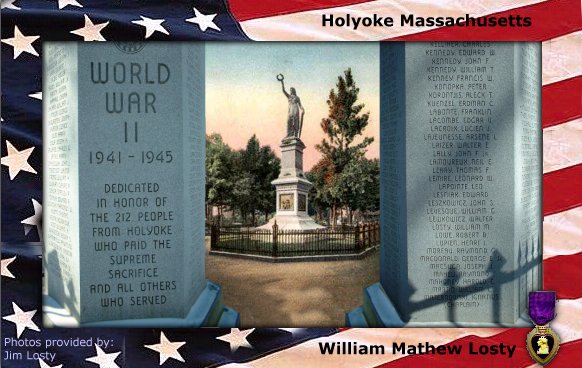
Enlarge
the photo above to read the names listed
The
American War Memorial - Phillipines
Williams
Headstone - Holyoke
Massachusetts
The
Losty Website Memorial
References:
USN Summary of Service
Page 1 | Page
2 | Page 3 |
USN
Death Record
Various Navy Related Websites
| Holyoke News Papers
Return to George J. Losty Web
Page
www.thelostys.com
|
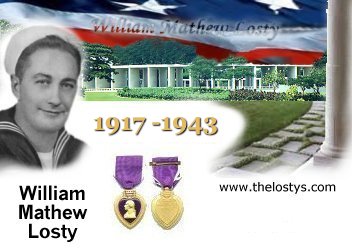

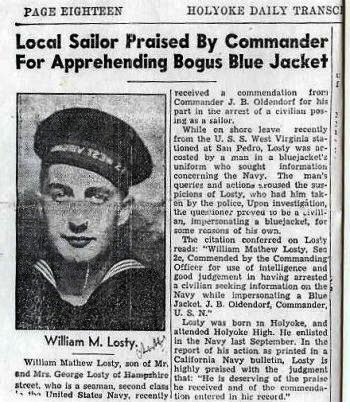
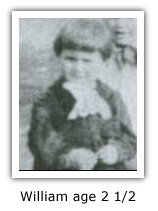

 1936
-1937 USS WEST VIRGINIA
1936
-1937 USS WEST VIRGINIA The citation conferred on him reads:
The citation conferred on him reads:



 While aboard the USS Nashville,
William qualified as a "Gun Director Pointer Second
Class" on March 26, 1940. He was entrusted with this
duty while stationed on the USS NASHVILLE
by his commanding officer on April 1, 1940.
While aboard the USS Nashville,
William qualified as a "Gun Director Pointer Second
Class" on March 26, 1940. He was entrusted with this
duty while stationed on the USS NASHVILLE
by his commanding officer on April 1, 1940.



 Description:
Tank landing ships (LST) are used to transport and land tanks,
amphibious vehicles and other rolling stock in amphibious assault.
Description:
Tank landing ships (LST) are used to transport and land tanks,
amphibious vehicles and other rolling stock in amphibious assault.













